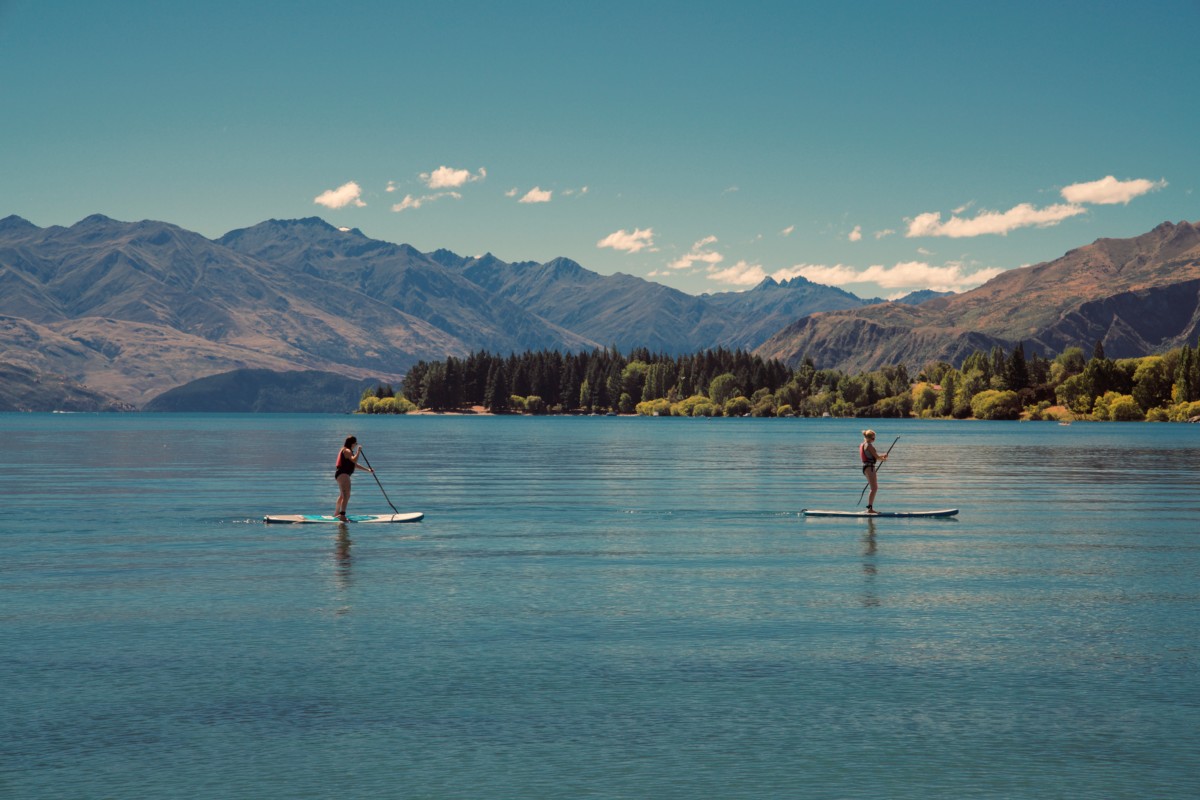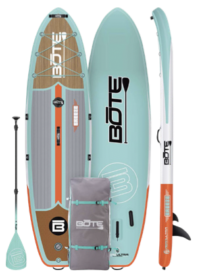Stand-up Paddleboarding is a water activity that involves a board, a paddle and you! SUP has only become popular over the past 10 years or so, but it was originally started in Hawaii. It is typically described as a cross between canoeing and surfing, according to George Sayour in a LiveAbout.com article. You can enjoy SUP in almost all kinds of water. If you’re a beginner, practicing on calmer waters like lakes or rivers can set you up for success.
The S.U.P. Stance
Stand-up paddleboarding is one of the many water activities that actually gives you a full-body workout! When standing on a paddleboard, one of the main challenges is keeping your balance. Without this balance, your board will tip back and forth, and you could end up in the water.
- Make sure you are not hunching over to get your paddle in the water.
- You should be standing up straight with one hand on the end of the paddle and the other hand gripping toward the middle of the shaft.
- Ignite your core muscles by squeezing your abs, unlock your knees and keep your glutes engaged.
- When you put the paddle in the water, use your arm, shoulder and back muscles to pull it back through the water until the paddle blade is in line with your ankles and then pull up, according to The Clymb’s website. “Think about pulling yourself past your paddle instead of just pulling your paddle through the water.”
- Every time you paddle, switch sides and alternate which hand grips the top of the paddle.
Paddle with your blade out: There is a slight bend at the end of the paddle where the blade starts. When you are paddling, the blade should be bent away from you as you paddle through the water. “This allows the blade to slip up out of the water at the end of the stroke as opposed to lifting water,” according to the Eastern Mountain Sports website.
Pick the Perfect Paddle
The paddle that you use for stand-up paddleboarding is typically longer than a canoe paddle and will vary in length depending on your size. Taller and larger people should try a paddle that is longer with a larger blade, and smaller people should use a shorter paddle with a smaller blade. According to Eastern Mountain Sports, you should pick a paddle that is about 8-10 inches taller than you for “cruising,” or leisure paddle boarding. Also, for cruising, a smaller blade is best, as the water resistance is less with a smaller blade and there is less stress on the arms.
Where Can You Paddle Board?
SUP is done in all kinds of water. Here in Florida, we have an endless variety of water from springs to lakes to beaches. Some popular local spots include Adventure Outpost and Sante Fe Canoe Outpost in High Springs, FL. If you want to try paddle boarding in the ocean, St. Augustine has many rental opportunities and lessons available for beginners. If you have never paddleboarded before, it is important to take it slow and learn the basics before heading out into choppy ocean waters.
PACK LIGHT: Worried about the size of the board and how you will get it to the water? Inflatable boards are easy to bring, set up and store, plus they are just as sturdy as the regular board! Bote Breeze Aero Inflatable Stand-Up Paddle Board, $649.99, dickssportinggoods.com
Related articles
Learn More About Counting Macronutrients
Pure Genius: Water Filters and Purifiers


